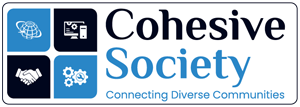
A significant factor contributing to the attainment gap between white students and those from Black, Asian, and Minority Ethnic (BAME) backgrounds in UK higher education is the scarcity of diverse role models. A survey by Universities UK, encompassing 44 staff members from 39 universities, revealed that 87% identified the lack of higher education role models representing all ethnic groups as a primary contributor to this disparity. Additionally, 82% pointed to curriculum delivery, and 79% highlighted the lack of diversity among senior staff as a significant factor.
The absence of diverse role models can adversely affect students’ sense of belonging and academic self-concept. When students do not see individuals who reflect their backgrounds in positions of authority or success within their educational environment, it can lead to feelings of alienation and diminished aspirations. This phenomenon is not unique to the UK; similar trends have been observed in the United States, where minority students often lack exposure to higher education opportunities due to a dearth of role models and limited guidance.
Beyond the presence of role models, curriculum design and delivery play crucial roles in student attainment. A curriculum that fails to reflect diverse perspectives can alienate BAME students, making it challenging for them to engage fully with the material. This lack of representation can perpetuate feelings of exclusion and reinforce the attainment gap. Studies show that inclusive curricula integrating contributions from diverse cultures and histories can enhance student engagement and improve learning outcomes.
Institutional culture and leadership are also pivotal. The report indicates that 72% of students believe the prevailing institutional culture contributes to the attainment gap. An environment that does not actively promote inclusivity or address racial disparities can hinder the academic success of BAME students. For example, the underrepresentation of ethnic minorities in senior academic roles often leads to a lack of mentorship opportunities, which are critical for educational and career progression.
Moreover, systemic barriers such as implicit bias in grading, assessment methods, and university support services further widen the attainment gap. Research from the Office for Students (OfS) suggests that even when controlling for prior academic achievement and socio-economic background, BAME students are still less likely to achieve first-class or upper-second-class degrees compared to their white peers. This suggests that institutional biases and structural inequities play a role in limiting student success.
To bridge this gap, universities must implement comprehensive strategies. Diversifying faculty and leadership positions can give students relatable role models, fostering a sense of belonging and motivation. Revising curricula to include diverse perspectives ensures that all students see themselves reflected in their studies, enhancing engagement and relevance. Additionally, cultivating an inclusive institutional culture that openly addresses issues of race and ethnicity can create a supportive environment conducive to the success of all students.
One potential approach is the implementation of mentorship and sponsorship programs that connect BAME students with professionals and academics from similar backgrounds. Universities should also train staff to recognize and mitigate unconscious bias in teaching and assessment. Furthermore, data-driven interventions, such as tracking student performance and implementing targeted support mechanisms, can help institutions address disparities effectively.
Addressing the ethnic minority attainment gap is essential for fostering a cohesive and equitable society. By recognizing and actively mitigating the factors contributing to this disparity, educational institutions can empower all students to achieve their full potential, thereby enriching the broader community. Closing this gap will benefit individual students and contribute to greater social mobility, workforce diversity, and economic growth.
The responsibility for change lies with policymakers, university leaders, and society. Investment in diverse recruitment, retention, and promotion practices within academia will create a more inclusive environment where all students, regardless of ethnic background, can thrive. The time for action is now; addressing these systemic issues will pave the way for a fairer, more representative, and higher-achieving education system.


